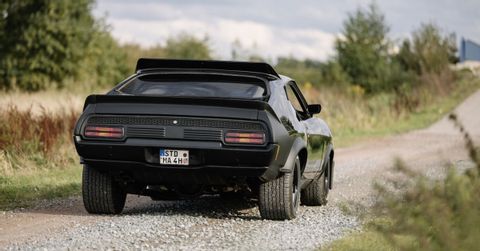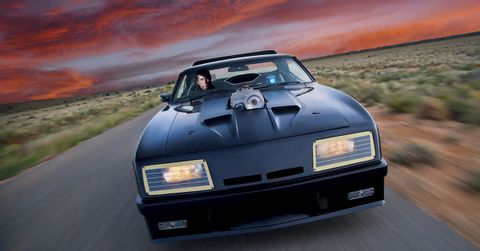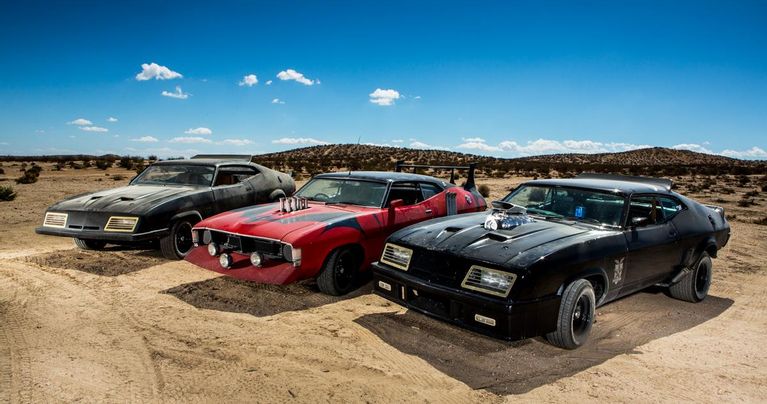The Mad Max ‘V8 Interceptor Pursuit Special’ is easily among the most famous cars in the history of cinema, and it’s every bit as cool as it seems.
Mad Max is a film series starring Mel Gibson (1979, 1981, and 1984) and Tom Hardy as a disgruntled and traumatised Maxwell Rockatansky, aka Mad Max (2015). These films are set in a post-apocalyptic Australia ravaged by nuclear war, where water and gas are in short supply. Cars are used for everything in this world, from tracking down rival gangs and meals to providing shelter from massive electrical and dust storms.
Max’s Falcon, also known as the ‘Pursuit Special’ and the ‘Last of the V8 Interceptors,’ is the most famous car in the franchise. The Mad Max Interceptor is one of the most famous cars in film history, a feat made all the more remarkable by the fact that the first film was made on a shoestring budget of $200,000 (roughly $1.2 million in 2022), a pittance for an action film.
Because the films were made over such a long period of time, and another one or two are in the works, there are obvious differences between the cars in the films. Here are some facts about Mad Max’s Interceptor that you may or may not be aware of. Minor spoilers follow for those who haven’t seen the movies yet.
8. Introduced In 1979

The ‘V8 Interceptor’ debuted as Max’s vehicle in Mad Max (1979), made a brief appearance in Mad Max 2 (1981) before being blown up, and was absent from Mad Max: Beyond Thunderdome (1985). It reappeared – albeit briefly – in the 2015 film Mad Max: Fury Road, where it was disassembled by war boys at the beginning of the film and then crushed between two trucks near the end.
The famous ‘Pursuit Special’ from the first Mad Max film was originally a 1976 Ford Falcon XB GT Hardtop in standard white paint. It had a 351cui (5.8-liter) V8 engine that produced 250 horsepower and 350 pound-feet of torque.
7. It Was An Australian Car

From 1960 to 2016, Ford Australia produced the Ford Falcon, a full-size family and muscle car. Following the phase-out of the American-influenced Falcon of the late 1960s, it was designed, developed, and built in Australia for the Australian market. The Falcon has since become a legendary model, igniting a localised muscle car war with the Holden Commodore, which is also Australian.
The ‘Pursuit Special’ from the Mad Max films helped it achieve this status, making it one of the most famous movie cars of all time, right behind James Bond’s Aston Martin DB5 and Doc Brown’s DeLorean Time Machine.
6. It Had A Fake Supercharger For The First Film

The ‘Pursuit Special’ was modified from the standard Falcon GT for the first film in the franchise, Mad Max (1979). The ‘Main Force Patrol’ logo was painted in gold on the front fender, just behind the front wheel, and it was painted black. It also had custom front and rear lip spoilers, flared wheel arches, side-exit exhausts, and a front nose cone and air dam, all of which were marketed as ‘Concorde’ style.
The massive Weiand 6-71 supercharger protruding through the hood was the car’s most famous added feature. While it appeared to be impressive, the supercharger was not connected to the engine, rendering it a non-functional prop in the first film. Director George Miller insisted on making the props as authentic as possible for Mad Max 2 (1981) and Mad Max: Fury Road (2015), so the ‘Pursuit Special’ seen in that film is equipped with a working supercharger.
5. Fury Road (2015) Had Fake Interceptors

The production team for the 2015 film couldn’t find any XB Falcons due to their scarcity, so they had to build three Falcons from the ground up. The production team struggled to find one for the second film, and had to resurrect the original car from a scrapyard.
Many of the cars in Fury Road (2015) were created in this manner, as director George Miller chose to use as little VFX as possible in order to make the film feel authentic. The automobiles and trucks used in the film were all custom-built for the project.
4. It Produced Around 600 HP

Instead of producing a meagre 250 hp with the addition of a functional supercharger, the production team fiddled with the engine, eventually getting around 600 hp out of it – more than enough for the film’s needs.
This was in stark contrast to Burt Reynolds’ Pontiac Firebird Trans Am Turbo in Smokey and the Bandit II (1980), which required nitrous injection to achieve the desired performance for the chase sequences in the film.
3. It Had A 40 Gallon Fuel Tank

The plot of Mad Max 2 shifted to Max scouring the desert for rations and fuel with only his dog for company in 1981. New modifications to the ‘Pursuit Special’ included revised side-exit exhausts, larger rear wheels, and two cylindrical fuel tanks with a total capacity of 40 gallons.
This was a necessary change, not only for the plot of the film, but also for the sake of practicality during filming. The improved engine turned out to be a gas guzzler, but thanks to the large fuel tank, the crew didn’t have to fill it up as frequently.
2. It Is Almost Impossible To Get One

Today, finding an XB Falcon for sale is nearly impossible because, while they were popular during their production years, they have largely vanished from the market. The XB Falcon GT is a rare and expensive classic muscle car to find. Many of the ones for sale (when they are available) are easily over AUS$200,000 (more than US$150,000).
It’s almost easier to get a Mad Max-inspired custom Falcon than it is to find a clean, rust-free XB GT. The alternative is to wait for a barn find car to be auctioned.
1. Where Are They Now?

The few remaining Ford Falcon XB GTs can now be found in the hands of enthusiasts and museums across Australia, with some even making their way to collectors around the world. The first film’s original ‘V8 Interceptor Pursuit Special’ was on display at the Cars of the Stars Museum in Keswick, England, until it closed in 2011. Since then, the car has been on display at the Miami Auto Museum in Florida as part of the ‘Dezer Collection,’ which includes over 1,100 vintage, antique, and one-of-a-kind (mostly movie) vehicles assembled by Israeli-born Michael Dezer.
The museum put the car up for sale in February 2020, along with a number of other movie cars. If one owned the most famous car in Australian film history, it would make for an interesting conversation starter.


